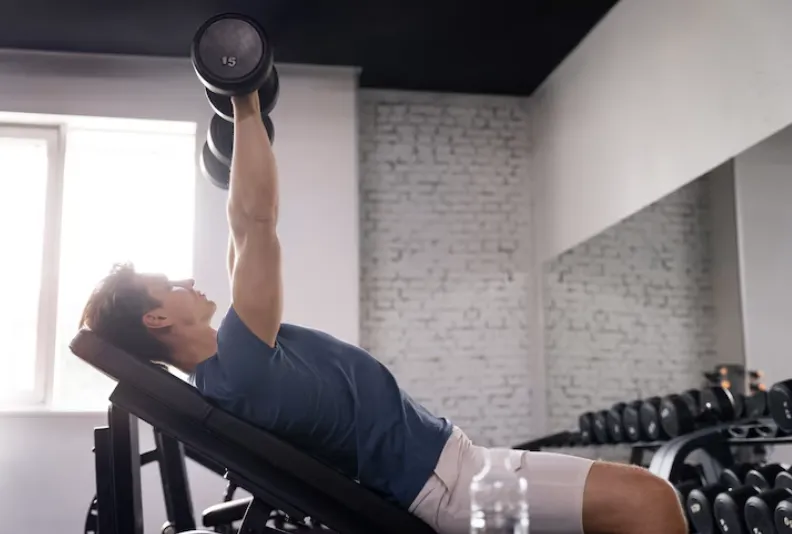Guide to Building Strength and Size

Chest training is one of the most popular areas of focus in the gym for both beginners and advanced athletes. A well-developed chest not only improves physical appearance but also enhances overall upper body strength and performance. Whether your goal is to build muscle mass, improve strength, or define your chest muscles, following the right techniques and exercises is essential.
In this article, we'll guide you through the fundamentals of chest training, including anatomy, key exercises, proper form, and tips for maximizing your results in the gym.
1. Understanding Chest Anatomy
Before diving into specific exercises, it's important to understand the anatomy of the chest muscles. The chest is primarily composed of two major muscles:
- Pectoralis Major: The larger, fan-shaped muscle that covers most of the chest. It has two heads:
- Clavicular Head (Upper Chest): Located near the collarbone, this portion of the chest is targeted by incline movements.
- Sternal Head (Lower and Middle Chest): The bulk of the chest muscle, which is activated by flat and decline exercises.
- Pectoralis Minor: A smaller, triangular muscle located underneath the pectoralis major. It assists in stabilizing the shoulder and aids in pushing movements.
Understanding these muscle groups will help you target them effectively through various exercises.
2. Key Chest Exercises
Chest training revolves around pushing movements that engage the pectoral muscles, shoulders, and triceps. Here are the most effective exercises for chest development:
a. Barbell Bench Press (Flat)
The barbell bench press is a classic compound exercise that targets the middle portion of the chest and allows you to lift heavy weights, promoting strength and muscle growth.
How to Perform:
- Lie flat on a bench with your feet firmly on the ground.
- Grip the barbell slightly wider than shoulder-width apart.
- Lower the bar slowly to your chest, keeping your elbows at a 45-degree angle.
- Push the barbell back up to the starting position by fully extending your arms.
- Repeat for the desired number of repetitions.
Pro Tip: Keep your core tight and your shoulder blades retracted (pulled back) to maintain stability and prevent injury.
b. Incline Barbell or Dumbbell Press
The incline press targets the upper chest, emphasizing the clavicular head of the pectoralis major. Both barbells and dumbbells can be used, though dumbbells provide a greater range of motion and allow for balanced muscle development.
How to Perform:
- Set an incline bench at a 30-45 degree angle.
- Lie on the bench and grip the barbell or hold dumbbells with an overhand grip.
- Lower the weight towards your upper chest, just below the collarbone.
- Press the weight back up by extending your arms fully, squeezing your chest at the top.
- Repeat for the desired repetitions.
Pro Tip: Avoid setting the bench at too steep of an incline, as this will shift the focus more onto your shoulders than your chest.
c. Decline Bench Press
The decline press targets the lower portion of the chest, helping to create a fuller, more balanced appearance. This can be done with a barbell or dumbbells.
How to Perform:
- Lie on a decline bench with your feet secured in place.
- Grip the barbell or dumbbells with your hands shoulder-width apart.
- Lower the weight to your lower chest or upper abdomen.
- Push the weight back up by fully extending your arms and squeezing your lower chest at the top.
- Repeat for the desired repetitions.
Pro Tip: Focus on controlled movements to avoid using momentum, and maintain a steady breathing pattern.
d. Chest Dips
Chest dips are a bodyweight exercise that primarily targets the lower and middle portions of the chest. They also engage the triceps and shoulders.
How to Perform:
- Position yourself on parallel bars, gripping them firmly.
- Lean slightly forward to shift the emphasis to your chest.
- Lower your body by bending your elbows until your chest is below the bars.
- Push yourself back up to the starting position by extending your arms.
- Repeat for the desired repetitions.
Pro Tip: To increase the difficulty, add weights using a dip belt.
e. Dumbbell Flyes
Dumbbell flyes isolate the chest muscles and focus on stretching and contracting the pecs, providing a different stimulus from pressing movements.
How to Perform:
- Lie flat on a bench with a dumbbell in each hand, arms extended above your chest with a slight bend in your elbows.
- Lower the dumbbells in an arc motion, keeping a slight bend in your arms as they come down to chest level.
- Squeeze your chest and bring the dumbbells back to the starting position, keeping the same arc motion.
- Repeat for the desired repetitions.
Pro Tip: Focus on form and control rather than heavy weight to avoid shoulder strain.
3. Proper Form and Technique
When it comes to chest training, using proper form is essential for avoiding injury and maximizing results. Here are a few tips to ensure you’re performing chest exercises correctly:
- Engage Your Core: Keep your core tight during chest exercises to stabilize your body and prevent lower back strain.
- Control the Movement: Avoid bouncing the weights or using momentum. Slow, controlled movements ensure that your chest muscles are doing the work.
- Retract Shoulder Blades: Keeping your shoulder blades retracted (pulled back) creates a stable platform and reduces the risk of shoulder injury.
- Don’t Overload the Weight: Use a weight that allows you to maintain proper form. Progressively increase the weight as your strength improves, but never sacrifice form for heavier weights.
4. Training Frequency and Volume
To see significant gains in chest size and strength, it’s important to structure your workouts with the right frequency and volume:
a. Frequency
Training your chest 1-2 times per week is sufficient for most people. If you’re training your chest once a week, aim for higher volume in each session. If you’re training twice a week, split the volume between the two sessions, possibly focusing on different parts of the chest (e.g., one day for upper chest, one day for lower chest).
b. Sets and Reps
For muscle hypertrophy (growth), aim for:
- 3-4 sets of 8-12 reps for most exercises. For strength:
- 4-5 sets of 3-6 reps using heavier weights. To build endurance:
- 2-3 sets of 12-15 reps with lighter weights.
5. Progressive Overload
Progressive overload is the principle of continually increasing the difficulty of your workouts to challenge your muscles and stimulate growth. There are several ways to apply progressive overload to your chest training:
- Increase the Weight: Gradually add more weight to the barbell or dumbbells.
- Add Reps or Sets: Perform an extra set or add more reps to your exercises.
- Improve Form: Focus on improving your form and range of motion.
- Shorten Rest Periods: Reduce the time between sets to increase intensity.
6. Warm-Up and Stretching
A proper warm-up is essential to prevent injury and prepare your muscles for heavy lifting. Before chest exercises:
- Start with 5-10 minutes of light cardio to increase blood flow.
- Perform dynamic stretches or light warm-up sets using bodyweight or light weights to activate the chest muscles.
After your workout, perform static stretches to improve flexibility and reduce muscle soreness. Stretching your chest, shoulders, and arms can help improve recovery and maintain a full range of motion.





